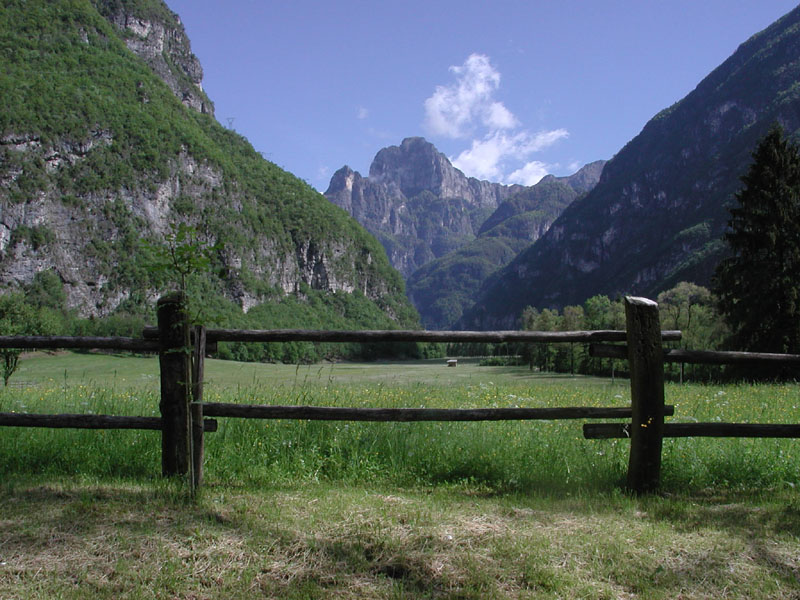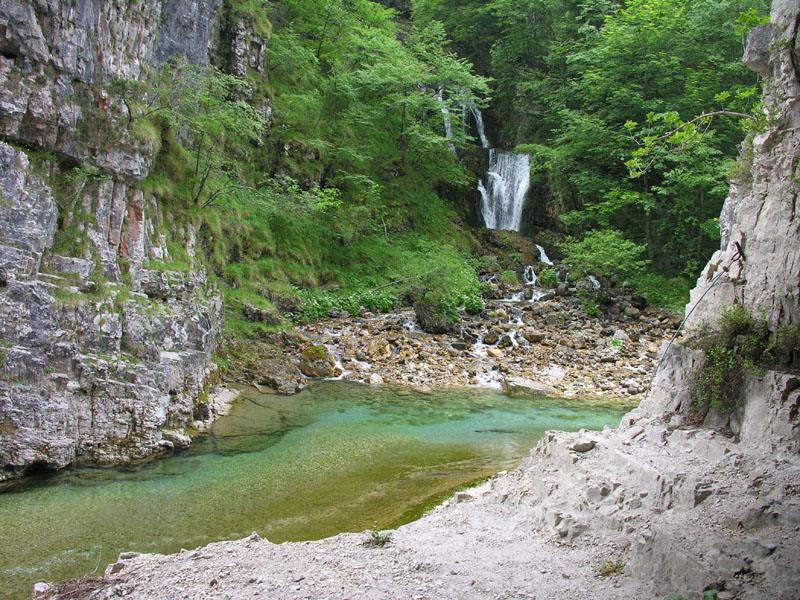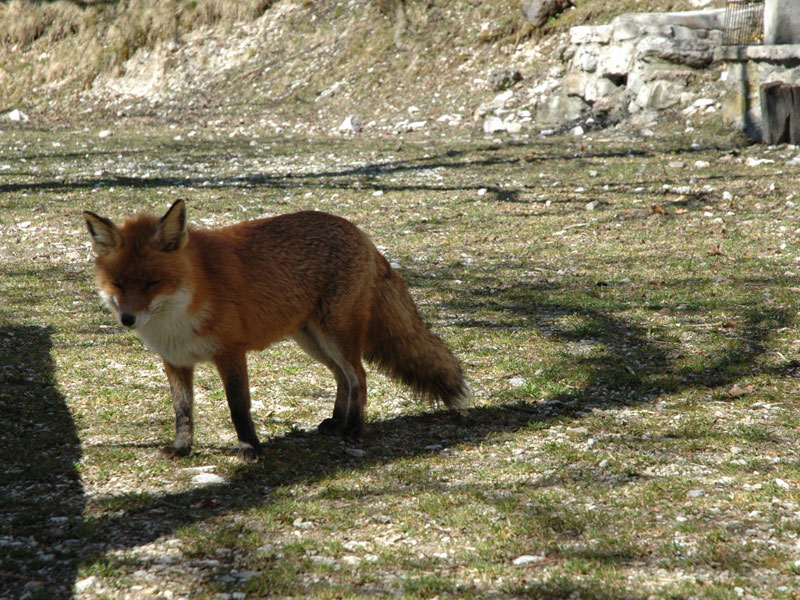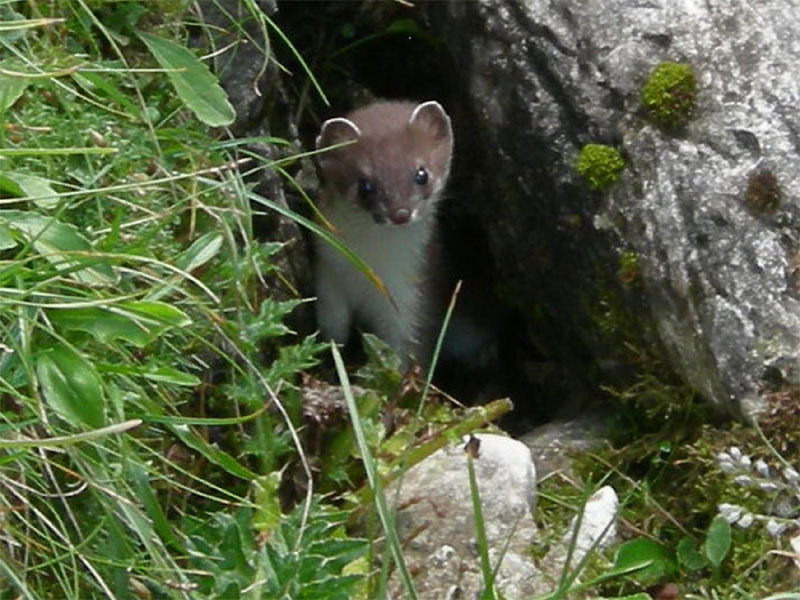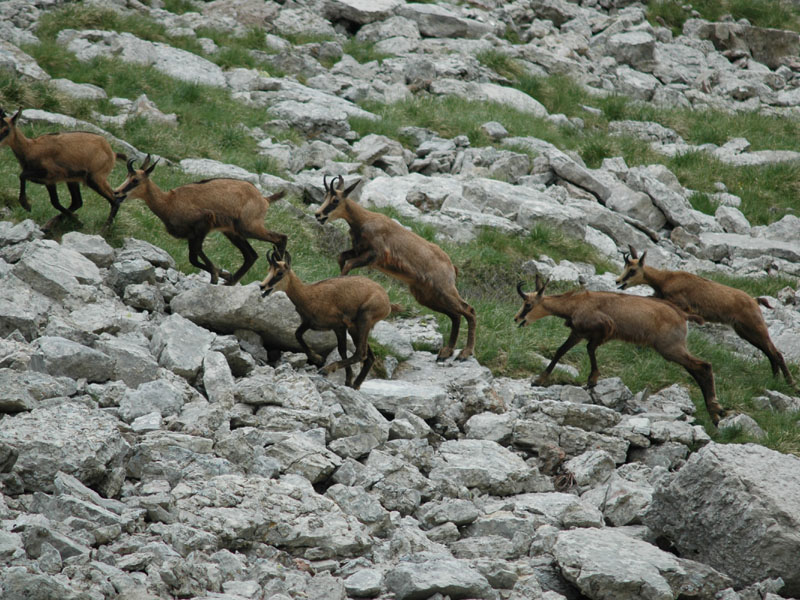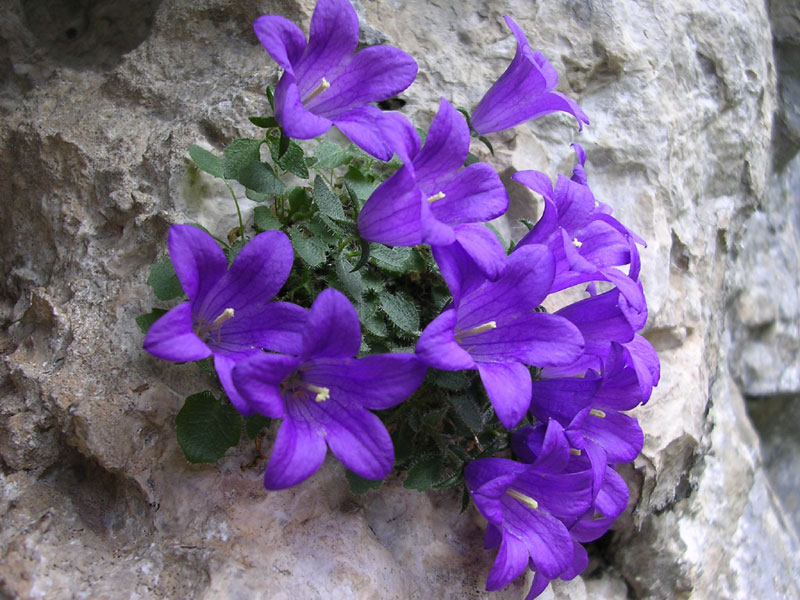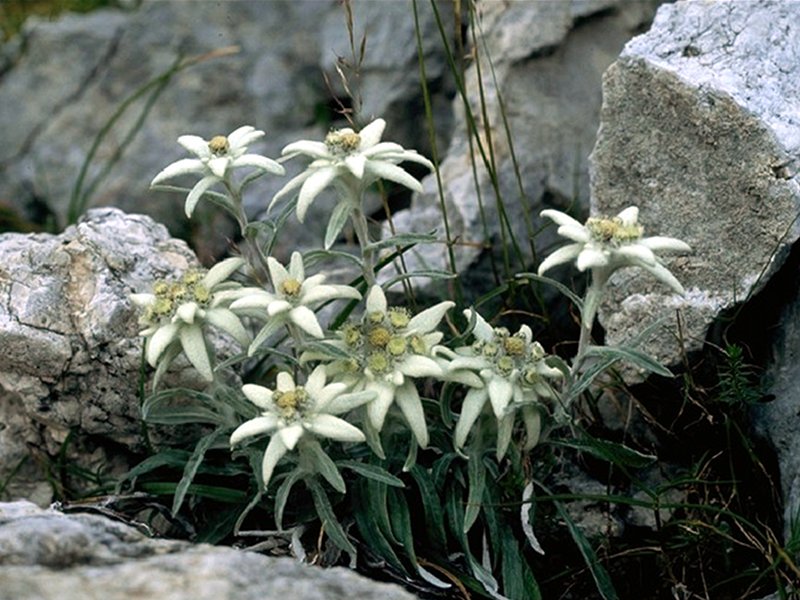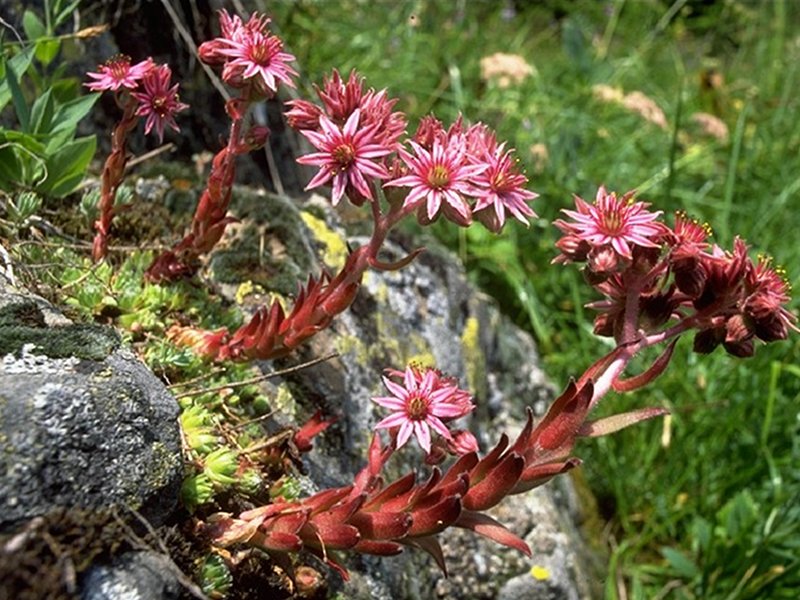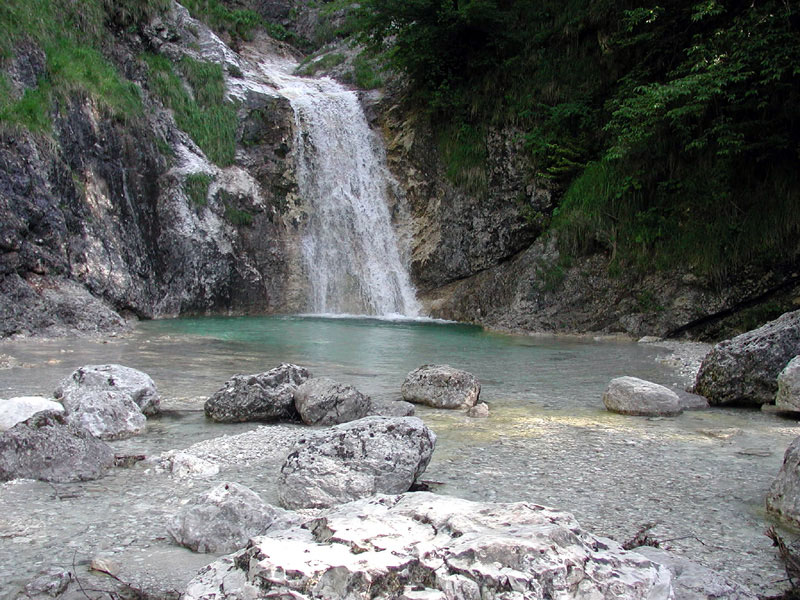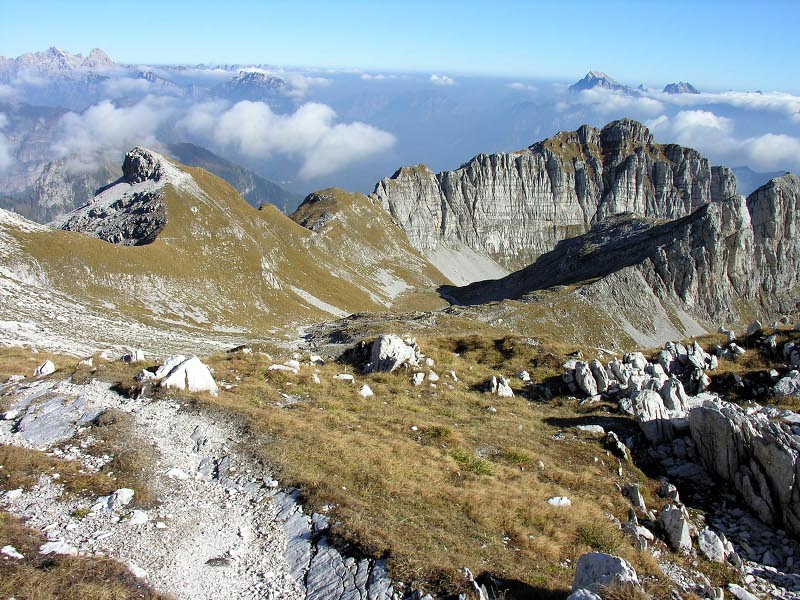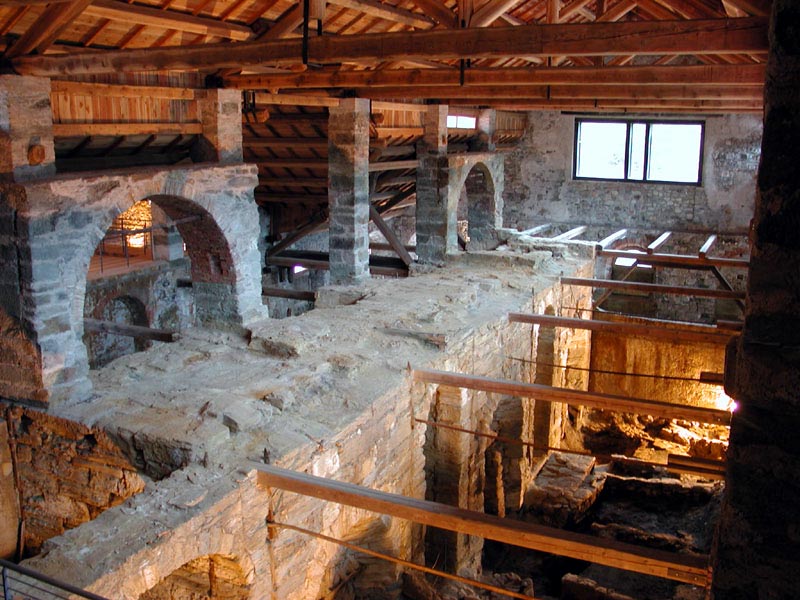Protected Area
Identity Card
- Dolomiti Bellunesi National Park:
- Land Surface Area: 31'034.00 ha
- Protected flora: 5 species (Italian text)
- Protected wildlife: 70 species (Italian text)
- Habitats: 26 types (Italian text)
- Regions: Veneto
- Provinces: Belluno
- Municipalities: Belluno, Cesiomaggiore, Feltre, Gosaldo, La Valle Agordina, Longarone, Pedavena, Ponte Nelle Alpi, Rivamonte Agordino, San Gregorio Nelle Alpi, Santa Giustina, Sedico, Sospirolo, Sovramonte, Val di Zoldo
- Establishment Measures: L 67 11/03/1988 - L 305 28/8/89, DM 20/4/90, DPR 12/7/1993, DPR 9/1/08
- PA Official List: EUAP0015
- Park Authority: Ente Parco Nazionale delle Dolomiti Bellunesi
- Further managed Protected Areas:
- SIC e ZPS Dolomiti Feltrine e Bellunesi
- ZPS Versante Sud delle Dolomiti Feltrine
The Park consists of different environments and cultures. There are many differences between the country wards situated on the slopes looking over the Valley of the Piave (in the areas of Feltre and Belluno) and the villages lying in the valleys of Agordo and Zoldo, since they are situated on slopes with completely different climatic and geological features.
Environments
The Park is situated on the southern border of the dolomitic area and it represents a sector of the southeastern Alps of noteworthy and acknowledged environmental interest, with a high level of naturality and an excellent conservation of the ecosystems.
It develops at an altitude between 412 m and 2,565 m, therefore it includes a great variety of environments: from the riparian areas of the valley bottom to the high-altitude rocky walls, through broad-leaved tree and conifer forests, high-altitude shrublands, grasslands and screes.
Fauna
Dolomiti Bellunesi are characterized by a great variety of environments giving the opportunity to many animal species to find the adequate conditions to live and reproduce.
There are 114 bird species nesting in the Park, 20 amphibian and reptile species. There are over 3,000 chamois and more than 2,000 roe deer. There are almost 100 species of diurnal butterflies and about 50 species of carabid beetles.
Flora
There is no doubt that one of the main scientific reasons leading to the birth of the Park was the great richness and rareness of its flora.
Already in the 18th century, Vette di Feltre and Mt. Serva were famous and visited by some of the most famous botanists of that time.
Geology
The Park is one of the most various and interesting territories from a structural and stratigraphical point of view, and for this reason the southern part of Dolomites has been the training ground for many geologists
Great part of the territory lies on rocks of sedimentary origin, but there are some exceptions, like in upper Valle del Mis and in Valle Imperina, where at the "Linea della Valsugana" (an important fault representing the geological border of the Dolomites), ancient rocks of metamorphic origin emerge.
Today in the Park we can admire large meadow basins, deep and wide valleys, large and sunny mountain faces, but also dark ravines dripping of water, rocks overhanging gloomy gorges, solitary and deep narrow valleys, and rough plateaus where the karst nature has given origin to a subterranean landscape made of pits, fissures, caves, galleries, and abysses penetrating the bowels of the earth.
The geological variety therefore implies a mosaic of morphological landscapes, often with distinctive and unique features, like high-mountain karst-nival environments shaped by the glaciers, and subsequently by snow and karst phenomena.
History
The Park covers mainly an area of middle-high altitudes with few inhabitants. Nevertheless, there are many traces left by man and witnessing his presence.
The D.P.R. according to which the Park Authority was created also extended the boundaries of the Park in order to include two precious historical sites. The Certosa di Vedana, situated near the homonymous lake in the Town of Sospirolo, is an extraordinary architectural site which needs restoration. Another extraordinary site is that of the former mines of Valle Imperina, in the Town of Rivamonte where the restoration activities have already started in the attempt to partially recover these mines which for centuries have marked the economy and the landscape of the Agordino region.




